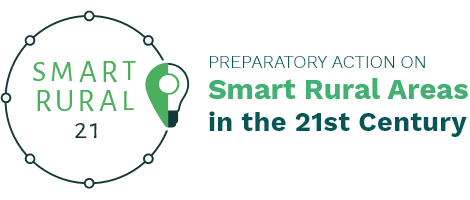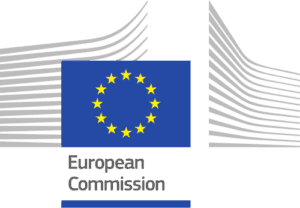Smart Solutions
Neighbourhood Housing Mediation Programme
Providing mediation between vacant homeowners and potential new tenants, making it easier for young people, new residents and families to live in unused or semi-empty housing intended for tourist use.
Implemented in : Ansó
Country : Spain
What’s the solution?
The aim is to increase the amount of affordable housing for rent, to give half-empty or unused housing a second life, and to make housing more accessible for young people
To make this possible, the programme positions itself as a mediating agent between the two interested parties: the owners of the empty or semi-empty housing and the young people interested in renting one. It establishes contact between them, helps them with the administrative procedures involved in the rehabilitation and/or rental of the housing, and offers two economic advantages 1) free insurance against non-payment during the first year, and 2) the energy performance certificate.
Owners of unused or semi-empty housing simply list theirs in a database of available housing stock and set the length of time they wish to rent it (one, three or five years) as well as the modality (for a few months, a full year or to share, if the owner lives in the house).
In the meantime, possible new tenants must formally apply to the programme requesting interest in housing. Once the rental price has been agreed and the contract with the owners has been signed, they can move into their new accommodation.
What makes it smart?
The solution is Smart because it is an intelligent and innovative solution to the problem of access to housing in rural areas...
It tries to create, efficiently and effectively, the necessary conditions to achieve population settlement and stop depopulation: if housing is available, young people will be able to settle and consolidate their personal and professional activity in the village, thus economic, social and demographic activity will grow. With housing opportunities, people will feel more confident to start a business, create a family and generate life in the village again!
The solution demonstrates the following forms of innovation:
- Social innovation – We create new rental modalities, which allows people with fewer economic resources or lack of knowledge of the possibilities that exist, to have access to a house. In addition, it makes temporary housing possible, gives people the option to get to know life in the village (and to leave if that is not what they desire) and provides the impulse to develop other aspects of their lives (professional, family, cultural...).
- Economical innovation – This solution offers a targeted intervention to overcome some of the barriers to the successful functioning of the private rental market to better match supply and potential demand for rural housing.

How is the solution implemented?
- Always start by studying the housing situation in the village. How much abandoned/disused housing exists? Can the owners be easily traced?
- Evaluate the needs and possibilities that exist through a housing census.
- Ask, is it necessary to make a housing plan? What are the consequences of not doing so? Would it be optimal for the strategic development of the village?
- Draft a plan. Include: housing analysis, needs, rental possibilities, lines of action, etc.
- Present the plan to the people: in meetings, talks, advertising on social networks, local/regional TV programmes, local and regional websites, etc.
- Directly contact potential owners and help with the arrangements.
- Create a document of agreement for the inclusion of a house in a database of available housing stock, specifying: type of rental, duration, condition of the house, obligations of both parties, etc.
- Directly contact people who have shown interest in renting a house, put them in contact with the owners, and accompany them during the process: by e-mail, telephone, visits...
- Carrying out the necessary administrative procedures: dialogue with insurance companies, technicians for certificates, etc.
- Explain the experience in networks in other rural areas.
In what local context has it been applied?
Our rural environment has been stable for decades because the main source of the economy was livestock, trades and timber, however, as young people (and in many cases women) have left to seek other professional opportunities in urban areas, the population has been steadily declining.
According to the National Statistics Institute, although living conditions have improved considerably, in the last 10 years Ansó has lost more than 100 inhabitants, and the trend continues downwards. Moreover, with the strong tourist development of recent times, the situation of access to housing has become more difficult. The rehabilitation of second homes is increasingly oriented towards rural tourist accommodation or holiday homes, occupied for a few weeks a year. On the other hand, there are a large number of owners who do not consider it necessary to rent out their empty homes, and if they do, the price is very high. As a result, older houses are deteriorating over time.
This makes it impossible for young people, new residents, or families with social needs or reduced economic resources, to take up residence in the village, which threatens the sustainability of basic services such as a medical care or school and, ultimately, the quality of life of the entire community.
In addition to this Smart Solution, the City Council has proposed to tackle the housing barrier through two other lines of action: the construction of four new "trampoline" homes for young people and new residents, and the refurbishment of two old municipal flats.
Who was behind the implementation?
- Ansó Town Council: mayoress, local development agent, deputy mayoress...
What was the local journey?
A “Neighbourhood Housing Promotion and Rental Assistance Programme” was created by the municipality. Key steps along the journey so far have been:
- - January 2019: Start of housing survey and creation of census of empty housing stock
- - January 2020: Drafting of the project
- - July 2020: First meeting and presentation of the project to the inhabitants of Ansó.
- - September 2020: First house registered in the Housing Exchange (“Bolsa de Vivienda”)
- - October 2020: First new tenants move into a house from the “Housing Exchange”
- - February 2021: First online exposure of the Programme to other villages in the area.
- - April 2021: Another contacts made between a potential young tenant and a vacant homeowner
And, furthermore, with regard to the other lines of action to tackle the housing challenge, notable additional steps in Ansó’s journey have been (by April 2021):
- October 2020: Application for subsidy from the Regional Funds within the Housing Plan, for the construction of "Vivienda Trampolín" (Tampoline House).
- September 2020: Works are carried out in the municipal flats "Casa Terrén".
- January 2021: settlement of the first tenant in the municipal flats.
- April 2021: settlement of the second tenant in the municipal flats
What have been the main outputs & results?
- Thanks to the “Neighborhood Housing Promotion and Rental Assistance Programme”, a couple from Madrid have settled in the village and are now working online.
- We are in contact with two seasonal neighbours (they only come during the summer or holidays) to include their properties in the “Available Housing Stock” from spring onwards.
- We have managed to create a contact between a young girl and an empty house owner for a possible rental.
- Since this action was publicised, we have received more than 10 applications from people interested in settling in Ansó.
What does it bring the village/community?
The solution is part of an integrated strategy to facilitate the settlement of the population. Accessibility to affordable housing is the basic and fundamental pillar for the people to continue to develop their lives and move forward in a sustainable way:
- The houses will be inhabited by people and will not be closed for the whole winter (or open only for tourist purposes). Therefore, their habitability will be maintained and it will be more difficult for them to deteriorate.
- In total, we expect that during the year 2021 a total of 3 flats will be included in the “Available Housing Stock” (“Bolsa de Vivienda”), so that up to 16 people could be accommodated.
- The settlement of these people will allow the creation of new families, birth of babies and a larger school. Basic services such as secondary education can be maintained. In addition, it will be possible to open a space for family reconciliation and childcare for children between 0 and 3 years of age (another of the lines of action of the global strategy).
- If the population grows, it will be more likely that networks and synergies will be created between people with ideas of entrepreneurship, economic and cultural development, so that, once again, Ansó will move forward. In addition, links between neighbours will be strengthened (as in the past).
- As the population increases, the number of services offered by the village (such as an increase in public transport, medical services for the elderly, activities for students and young people) will also grow and become more resilient.
- This measure is attracting people looking to settle in rural areas for teleworking or entrepreneurship. So, it contributes to the economic, technological, digital and innovation development in the village. It will also allow people who wish to work in the future Multi Activity Centre (which we are working on) or in the Rural Technology Centre (a technological entrepreneurship project) to do so.
- Finally, it will favour the maintenance of local culture and tradition.
What’s needed
Financial resources
Main types of cost:
• At least one person is needed to plan, manage and monitor the neighbourhood housing mediation programme”. Therefore, one of the costs will be the proportional part of their contract, or if contracted solely for that purpose, the whole contract. Approximately 2,000€ for nine months of the contract.
• The budget of the insurance company to cover the Non-Payment Insurance: approximately €500 for each dwelling included in the “Available Housing Stock” (“Bolsa de Vivienda”).
• The budget of the technician/consultant for the completion of the Energy Performance Certificate: approximately €100 for each dwelling included in the “Available Housing Stock” (“Bolsa de Vivienda”).
Financial needs:
● The approximate total cost will be: 2.600€
Funding received:
| Source | Amount | Funded |
|---|---|---|
| Municipality of Ansó (own funds) | 2,600 € | Recruitment of a project manager. Non-Payment Insurance. Energy Performance Certificate |
Human resources
• City Council team: mayoress, deputy mayor, local development agent, and labourers.
• Local community: homeowners
Physical resources
• Empty or seasonally used houses, from the village
What to do…
- Always start by analysing the housing situation in the village and the existing demand.
- Facilitate a "match" between people interested in renting and owners (offer solutions to possible problems, promote agreements and negotiations, try to find common interests...).
- Explain to people as clearly as possible the need and potential benefits for the village to reduce possible barriers.
- Supervise the rental contracts between the owners and the new tenants.
and not to do
- Don’t only accept new renters coming from the city (locals may feel offended).
- Don’t start moving forward with the project without being clear on all the permits, certificates (e.g. energy) and other administrative procedures, etc. that are needed in the local context.

